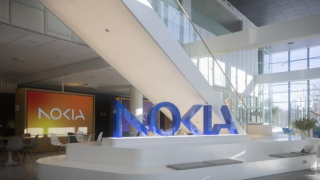|
Ekinops is headquartered in Lannion, France |
In the world of transport vendors it is often too easy to overlook all but the largest of players. Although the likes of Ciena and Alcatel-Lucent seemingly dominate the transport sphere, a small French company is ambitiously trying to wrestle its way on to the scene and provide a fresh alternative for service providers.
From its conception in 2003, Ekinops has been seeking to differentiate itself by building a flexible transport offering aimed at serving a broad cross-section of the carrier market, which has seen the company successfully go on to establish a customer base of over 100 companies. Unusually for a purely transport player, however, Ekinops didn’t even begin life in the transport business.
Ekinops was founded in 2003 by a group of ex-Alcatel employees. Among them were Francois Ollivier, who managed Alcatel’s submarine division and is now the company’s COO, and forward error correction (FEC) technology expert Jean-Luc Pamart, who was a member of the submarine division’s R&D team and is now the company’s VP of engineering.
Under their guidance, the company began life as a module producer, selling its hardware to some of the vendors which would later become its main competitors.
However, bigger plans were on the horizon for Ekinops, explains Rob Adams, VP of global marketing and PL management: “We always had plans to get into the transport system business, we just used the first three years to build the differentiating capability we needed to become a systems vendor.”
It was during the 2003-2006 period that Ekinops set about building a library of “differentiating technology” to launch its own transport system. Key in this transition would be the company’s T Chip which remains at the core of its business almost a decade later.
In 2006 Ekinops made its transition into the transport market with the launch of its Ekinops 360 platform. Through three years of research and development, Ekinops launched the 360 with a broad addressable market in mind, allowing metro, regional and long haul across the same platform.
Removing unnecessary components
From the offset Ekinops sought to separate the two worlds of transport solution providers and component vendors: “In the early 2000s, transport systems started to be thought about as a commodity product, mainly because they were almost built like a PC” reflects Adams.
The T Chip, he claims, helps to remove the dependence on component vendors and allow more independence to tailor a transport solution that meets the needs of a network. “In terms of the transport industry, most of the players are buying components from the same vendors, and because of this they are building fundamentally the same machine,” says Adams.
By producing the T Chip in house, Ekinops was also able to build other capabilities around the solution. Utilising the expertise of co-founder Pamart, who holds several patents in FEC technology, the company also offers FEC software, which analyses services on a long distance transport build from the beginning right through to the end and then corrects any errors. “We have a better FEC than our competitors because we’re not buying it from component vendors, we actually produced it ourselves,” says Adams.
Following its move into the transport business in 2006, transport became, and still remains, Ekinops’ main focus today. By being a pure transport player, Ekinops believes it sets itself aside from competitors that offer a wider range of different communications solutions: “Other companies are very segmented and sometimes transport isn’t even their most important business, where as for us it’s everything,” says Adams.
This keen focus has seen Ekinops establish a customer base of over 100 companies, including the likes of AT&T, Belgacom, Clearwire, Illiad, Pacnet and Zayo. Given the size and reputation of its competitors Ciena and Alcatel-Lucent, establishing new customers has not been as hard for Ekinops as many would have expected. “It is not difficult for us to displace incumbent vendors,” says Adams. “We’ve had instances where companies not only used us to displace customers for a green field build, but also capped the existing vendor.”
It has also been aggressively targeting new opportunities in emerging markets. The company recently signed up its first customer in the booming Brazilian market and Adams forecasts more business for Ekinops across Latin America: “We now expect to see plenty of transport build-outs across the continent,” he says.
Being wise with investment
While being a smaller vendor has given Ekinops greater flexibility with its transport solution, it has also meant the company has had to be meticulous with its investment and production decisions.
A failure to identify future demand from customers and to produce an attractive offering would weigh heavily on a company of Ekinops’ size. “We have to make better decisions and more carefully determine where the market is going,” says Adams.
When it came to the inevitable move towards 100G, the company therefore had to carefully monitor when it felt service provider demand would make the next step. “Fortunately we forecast pretty accurately,” says Adams.
Ekinops went on to launch its 100G solution late last year. “There is a lot of functionality which we can add to 100G and you’ll see more generations that will rapidly bring the price down,” says Adams. It is expected that the growing industry momentum towards 100G optical technology will allow a price curve to develop much more quickly than 40G. “We’ll be producing second and third generation 100G products as well, adding capability to the 100G product to continually keep up with economies of scale.”
In the transport business the next higher rate technology tends to be the main talking point but this doesn’t mean that Ekinops has disregarded the importance of lower rate technology. “10G is by far the primary deployed service rate and I think it will remain so for a long time,” says Adams.
400G and beyond
As a result of its forecasting process, Ekinops is also engaged in a number of European wide research projects investigating higher rate technology. “Certainly 400G is the next step, but exactly when it will be cost effective is questionable,” says Adams.
By engaging in these community projects, Adams believes that Ekinops will progress to economical 400G and terabit technology a lot faster, whilst also receiving valuable input from service providers and other vendors. This cooperative strategy is something that he considers to set Ekinops apart from its competitors: “The difference between us and guys like Ciena and Alcatel-Lucent is that we share technology with others.”
So when will we see a 400G offering from Ekinops? “It is not our focus this year but I would say it could be as soon as next year,” says Adams. “We’re still trying to figure out whether it can be done cost effectively right now.”
But the future for Ekinops is not just about higher capacity rates and new markets. Adams forecasts opportunities with changes in the nature of transport systems over the next few years. “If you look at the entire optical business there is a convergence of equipment towards transport. As times goes on you’ll see more and more capability merged into transport systems.”
With new opportunities on the horizon and ever increasing demand for capacity, Ekinops could well prove that there has never been a better time to be a transport specialist.
Key Facts: Ekinops
History: Ekinops was founded in 2003 by seasoned telecoms and datacom industry experts, with the backing of several private investors. The company spent its first three years as a module vendor, working on technology which would allow its transition into the transport space. In 2006 Ekinops launched its 360 platform and has since progressed from 10G to offering 100G solutions at the end of 2011.
Headquarters: Lannion, France, with sales offices in Europe, and the US and a representative office in Singapore.
CEO: Didier Brédy
Customers: Ekinops has over 100 customers globally including enterprises, service providers, municipals, research and education organisations.
Revenue: Ekinops is a privately owned company and does not disclose its revenue.
Products and services: 10G, 20G, 40G and 100G transport solutions, integrated Carrier Ethernet switching, routing and multi-protocol, as well as muxsponder, transponder and amplifier technology.




